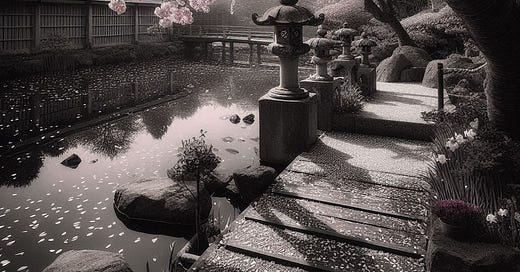Behind the Heian Jingu shrine, cherry blossoms weep into cloud-smudged ponds. A week early, a fortnight late — there might have been no pink canopy between silence and sky. Is transience, then, the final gauge of unbearable beauty? An extended longing, an occasional alleviation. Like raindrops. Or love. Dead flowers mix with the soil and become other things: fruits, fragrant flowers, a bird. Ephemeral things. When love runs out, it becomes a poem. A forever being. A trellis of quiet words peering into the water. Like tree rings, a poem cut open can tell you its age. Meaning grows inside it, in concentric circles. Each measuring the growing distance between poem and poet. Poet and love. What if we had another hour? Another month? Another way? The kurinji flower blooms once in twelve years in the Nilgiris, staining the low mountains blue. We are all tethered to primal timetables: Spring. Morning. Eclipse. Tide. By the pond, the poem waits, watching another generation of golden koi swish their tails as they swim, once more, through its metered shadow.
#Poetry
This poem goes back to a trip to Kyoto, many Aprils ago, when the cherry blossom were in bloom. It was written in April 2023 as part of my poetic memoir series.
The Kurinji flower (Strobilanthes kunthiana) is known to bloom once in twelve years in the Western Ghats in Southern India.




@jared mulhair Thanks for the restack, Jared.
I love these exquisite observations, Rajani. A refuge from the noise.